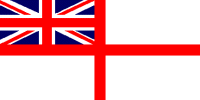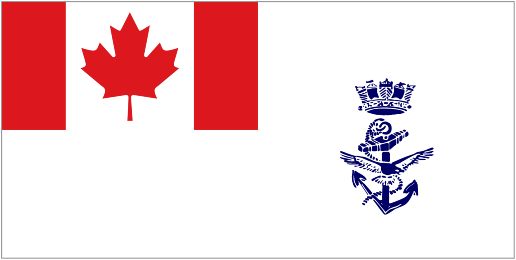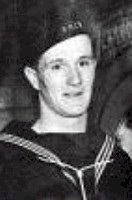|
A Royal Canadian Navy Historical Project
In memory of those who have Crossed the Bar
CURRY, Frank - a veteran of the Battle of the Atlantic and a prolific writer and life - long walker, died in Ottawa at age 94. Frank joined Royal Canadian Naval Volunteer Reserve in October 1940 and served in HMCS KAMSACK, as an Asdic operator on escort duty in the North Atlantic. Promoted to Leading Seaman in June 1943 he then joined the crew of the Bangor mine sweeper, HMCS CARAQUET, which patrolled the mid - ocean off Halifax and later the English Channel and vicinity until demobilization in October 1945. He wrote about his wartime experiences, “War at Sea: A Canadian Seaman in the North Atlantic” (that included serving in a corvette), and “A Lifetime of Walking” that chronicle his world - wide travels. He was predeceased by brothers John, Nat and Ed and sisters Patricia and Edna, and is survived by wife Mary, children Frances, Sean and Nathan and brother Bill.
Ships served in:
During the Second World War, a prairie boy named Frank Curry found himself aboard a cheap, leaky ship called a corvette, as he and thousands of other inexperienced Canadian sailors went up against the dreaded German submarine, the U-boat.
"What a miserable, rotten hopeless life. I cannot imagine a more miserable existence than this of being caught on a corvette in the Atlantic. An Atlantic so rough that it seems impossible that we can continue to take this unending pounding and still remain in one piece. Ones joints ache and ache from the continuous battle of trying to remain upright."
Seamen joked that corvettes were so unstable that they would roll in wet grass. But they were Canada's only defence against the massive fleet of German submarines that were stalking Allied supply ships in the North Atlantic.
Early in the war - before Canada launched its large fleet of corvettes - it became apparent that the Allies (countries fighting Germany) needed a naval presence in the North Atlantic. Each month hundreds of ships left North America, bringing tons of food, lumber, iron, steel and oil to England; the supplies were the life blood of the Allied war effort. At the height of the U-boat war from 1942 to 43, up to up to one hundred supply ships were sunk each month.
For British Prime Minister Churchill, Nazi U-boats were the hand around his country's throat.
"The only thing that ever really frightened me was the U-boat peril. How much would the U-boat warfare reduce our imports and shipping? Would it ever reach the point where our life would be destroyed? Here was the slow, cold drawing of lines on charts, which showed potential strangulation."
By 1941, Allied supply ships were lost to U-boats faster than they were being built and Canada launched a major naval recruiting and shipbuilding program to help. The tiny corvettes - 190 feet long and 33 feet wide - were built rapidly. The Canadian navy used them to find and destroy enemy submarines using the corvette's single four-inch cannon.
In the early part of the Second World War, German submarines, known as U-boats, sunk up to a hundred Allied supply ships each month crossing the North Atlantic. Pictured here, a boarding party from H.M.C.S. Chilliwack alongside a captured German submarine
In the early part of the Second World War, German submarines, known as U-boats, sunk up to a hundred Allied supply ships each month crossing the North Atlantic.
Twenty-year-old Frank Curry signed up during the first fever of mobilization.
"I grew up in Winnipeg, Manitoba, thousands of miles from both the Pacific and Atlantic Oceans. A prairie boy through and through. And yet, like thousands of others, from the farms, villages and small towns and cities of the prairies, I ended up on a corvette in the North Atlantic."
He was a sonar operator on HMCS Kamsack, searching for submarines as they escorted merchant ships across the Atlantic. A hundred men were crowded into facilities meant for 50, a damp, dismal existence.
"Mess deck is a terrifying place to venture near, knee-deep in sea water, tables smashed, clothes floating around in it, breakfast stirred in, the crew in an almost stupor from the nightmarishness of it all. If only they could portray all this in their recruiting posters."
The recruiting posters didn't and more than 100,000 Canadian men and women enlisted during the war. But the Royal Canadian Navy, responsible for escorting half the convoys to Britain, was stretched beyond the limits of its training and equipment. Two years into the war corvette Commander Jim Prentice warned Ottawa: "The majority of the RCN corvettes have been given so little chance of becoming efficient that they are almost more of a liability than an asset to an escort group. The commanding officers have apparently been given no instruction in convoy work and little chance to train their officers, most of who are without sea experience of any sorts. It is as though we were attempting to play against a professional hockey team with a collection of individuals who had not even learned to skate. "
The trip across the Atlantic was slow and dangerous, especially when out of range of Allied air cover. Sailors called it the "black pit" and it was where the German submarines lay in wait.
Frank Curry recorded the perils of the journey: "Sunday May 10, 1942. Sharp alteration of course on emergency signal. Six to eight German U-boats in pack formation, laying across our course, 300 miles ahead. Convoy W-8 under heavy attack to our north; they lost six ships last night Sunday, May 17, 1942. We lost ship on the far side during the night. Nothing we could do about it."
For merchant sailors - including boys as young as 15 - the odds were bad. Less than half of merchant mariners survived the sinking of their ship. Vessels laden with iron ore or oil or explosives doomed the entire crew.
"Terrific explosion just at dark and a 10,000-ton merchantman went to the bottom in less than a minute. This was followed in rapid succession by two more terrible explosions within minutes and two more large ships, torn in two, plunged out of sight. A terrible feeling to see the flickering lights of survivors in the water go out one by one ... we moved on into the night. "
Training, air cover and better equipment would eventually turn the tide of the convoy war. The Allies managed to sink well over 700 U-boats and eventually won the Battle of the Atlantic.
By the war's end, Canada boasted the third largest navy in the world, but over 3,600 Canadian sailors and merchant mariners had perished. Frank Curry would survive the war but his years at sea would remain with him the rest of his life.
"There are long, long hours of thinking what it all means. The vastness of the sea is beyond all description, but it does something way down deep inside me, and to be out here, part of this grim relentless struggle brings me emotions that I have never experienced before. I know I will never forget these days and nights."
Source/Credit: CBC Canada - A People's History
|
 For Posterity's Sake
For Posterity's Sake 
